
Blenheim Mk. V

When the Bristol Blenheim made its debut in the summer of 1936 it was the first modern, all metal cantilever monoplane of stressed skin construction to be placed into production for the Royal Air Force. More than any other aircraft it sounded the death knell of the fighting biplane. It set a pattern in light bomber design that other nations were not slow to follow. At the time of its service introduction it was possessed of a performance that enabled it to outpace most contemporary fighters, yet such was the pace of combat aircraft evolution that when the RAF went to war in September of 1939 it was soon discovered that the Blenheim was not what it was thought to be.
The Blenheim I was powered by two 840 h.p. Mercury engines and achieved 281 mph at 12,000 feet. The Blenheim IV which was the next production variant (there was no Blenheim II or III) differed from the Blenheim I in only two major respects, a new forward fuselage with a lengthened nose and stepped windscreen and long range tanks in the wings. A further development was suggested by Bristol based on experience with the aircraft in France. The primary difference was the provision for a new nose section housing four Browning machine guns with 1000 rpg. an armored windscreen was provided, the cockpit was armored and a Bristol BX turret with two brownings and a gyro gun sight was installed. Before the prototype for this version was flown the specification was revised to include high altitude bombing. This new demand was met by the development of a new interchangeable front fuselage, the high altitude version having a bombardier's station with offset aiming panels and a faired "bathtub" underneath to serve as a foot well for the bombardier when navigating and as a housing for a Frazer- Nash mounting carrying two Browning guns for rearward defense. Two prototypes were built for what was to be the Blenheim V, the first with the ground attack nose and the second with the high altitude nose. The service life of the Blenheim V was destined to be short for its performance left much to be desired. With two 830 hp Mercury engines it was decidedly under powered.
While the exploits of the Blenheim during wartime operations were overshadowed by those of other types, the aircraft made a significant contribution to the development of the RAF. the Blenheim was one of a handful of aircraft on which the RAF cut its teeth.
The Kit
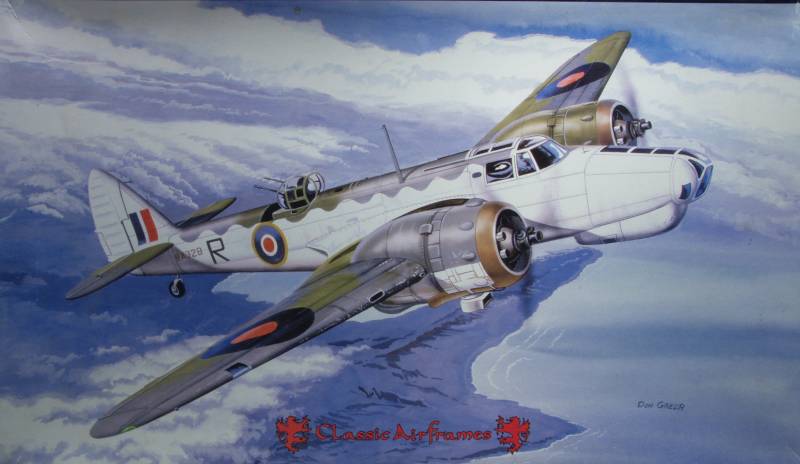
The Classic Airframes Blenheim comes in a typical CA top open two part box with nice artwork on the top. Inside the box is one large bag with all the injection molded parts plus three smaller bags. Two contain resin parts and one the clear parts. The injection molded parts are in a light gray color with very fine recessed panel lines and fastener detail as well as some raised detail where appropriate. The surface is glossy and except for some scuffing from shipment contained no surface defects on the main air frame parts. The control surfaces are all fixed and have a very light rendition of the fabric on them, about as close to perfect as it gets. The demarcation lines for the control surfaces seem to be a bit shallow but this can be fixed with a bit of scribing. As with many short run kits the sprue gates are heavy in some places which will require some care in removing them. The large parts exhibit some moderate flash and a few of the smaller parts like the landing gear struts have quite a bit along with a parting seam so some time will need to be spent cleaning things up. The tires have smooth tread and they are weighted, perhaps a bit too much in my opinion. The tail wheel strut appears positively anemic and I would consider replacing it with something from wire. There were no ejector pin marks where they will be seen when the kit is completed. All together there are 62 injected parts by my count, see photos below.
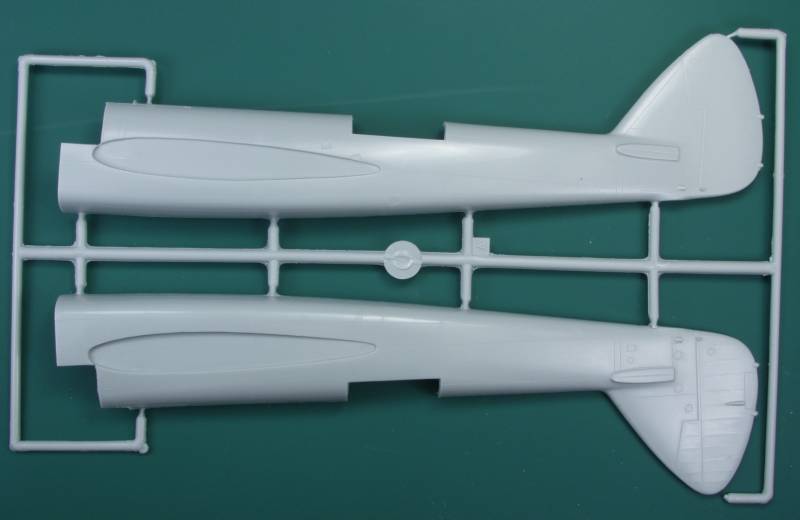
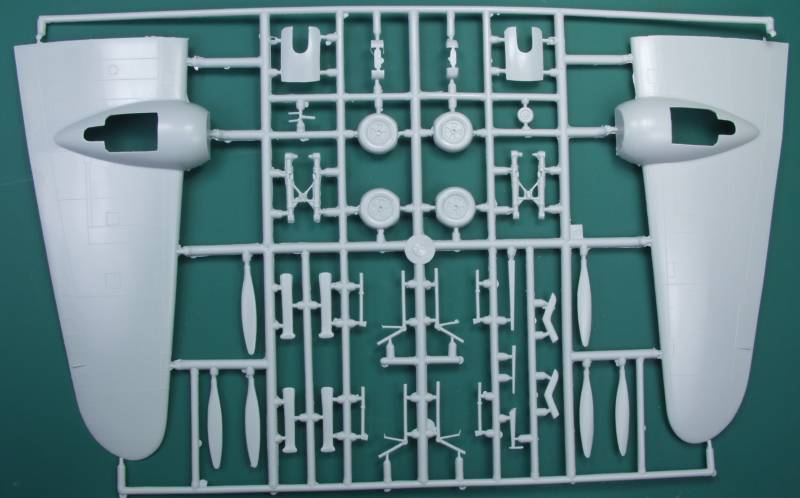
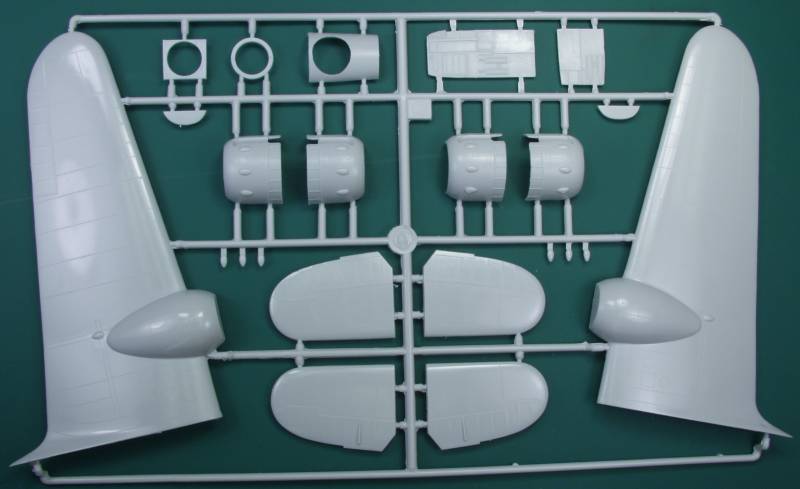
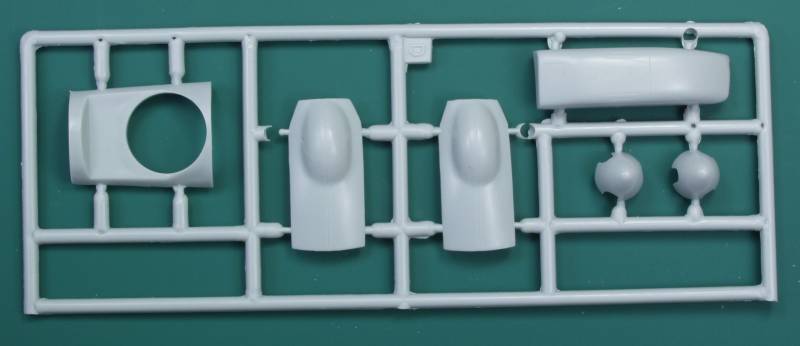
There are a lot of resin parts with this kit as can be seen in the photos below. Cockpit and nose area side walls, exhaust stacks, guns, bulkheads, two lovely gear wells, engines, prop hubs, instrument panel, scoops, pilot's seat, turret parts and items too numerous to mention. All the parts are very crisply molded and I found no voids or short shots. All together there are 75 resin parts, see below.
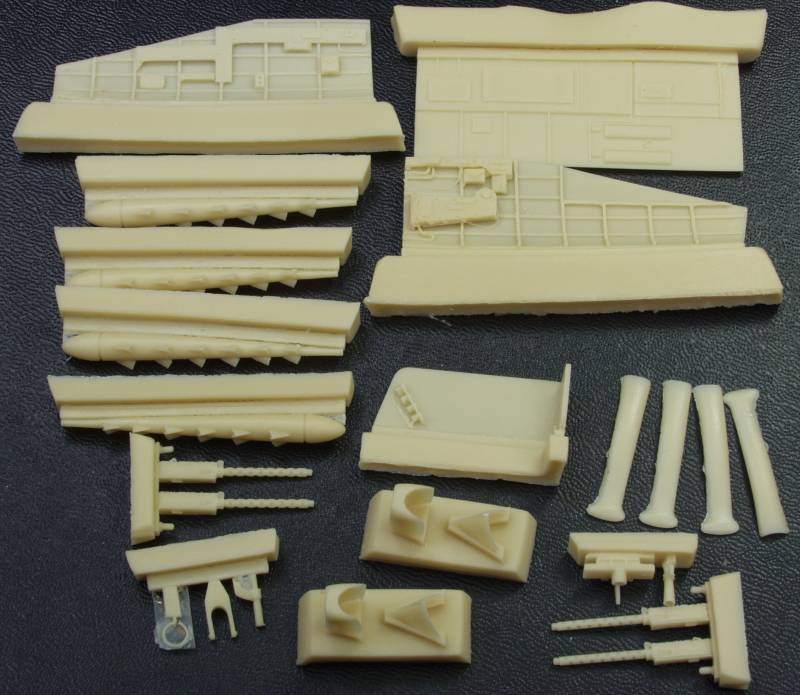
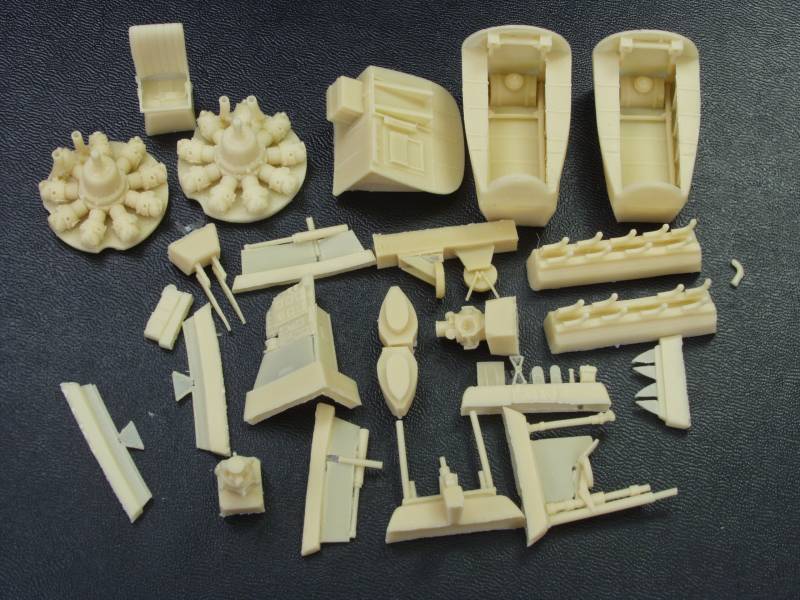
The clear parts are reasonably thin and clear. The entire nose is molded clear which removes the possibility of needing to fill and sand the areas where the cockpit and nose glazings go. The frame lines are raised which will make masking and painting easier. All together there are five clear parts for a kit total of 142 parts, quite respectable number.
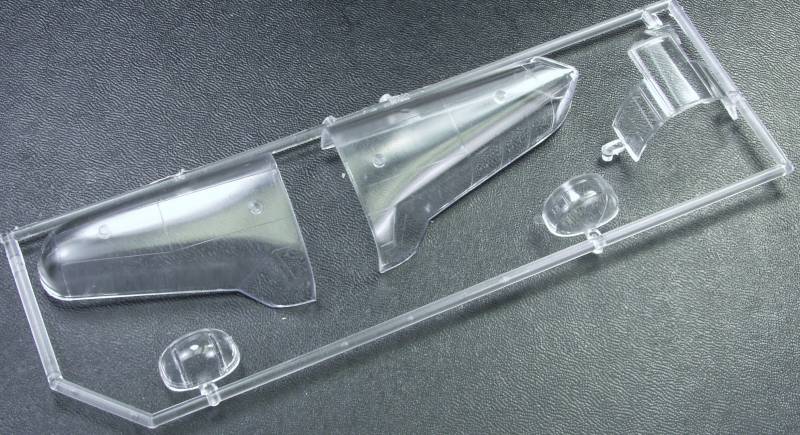
The decals provide markings for two aircraft, a Royal Hellenic Air Force version from 1943 and Free French Air Force craft from 1942. They are thin, glossy and nicely registered as one would expect from Microscale. See below.
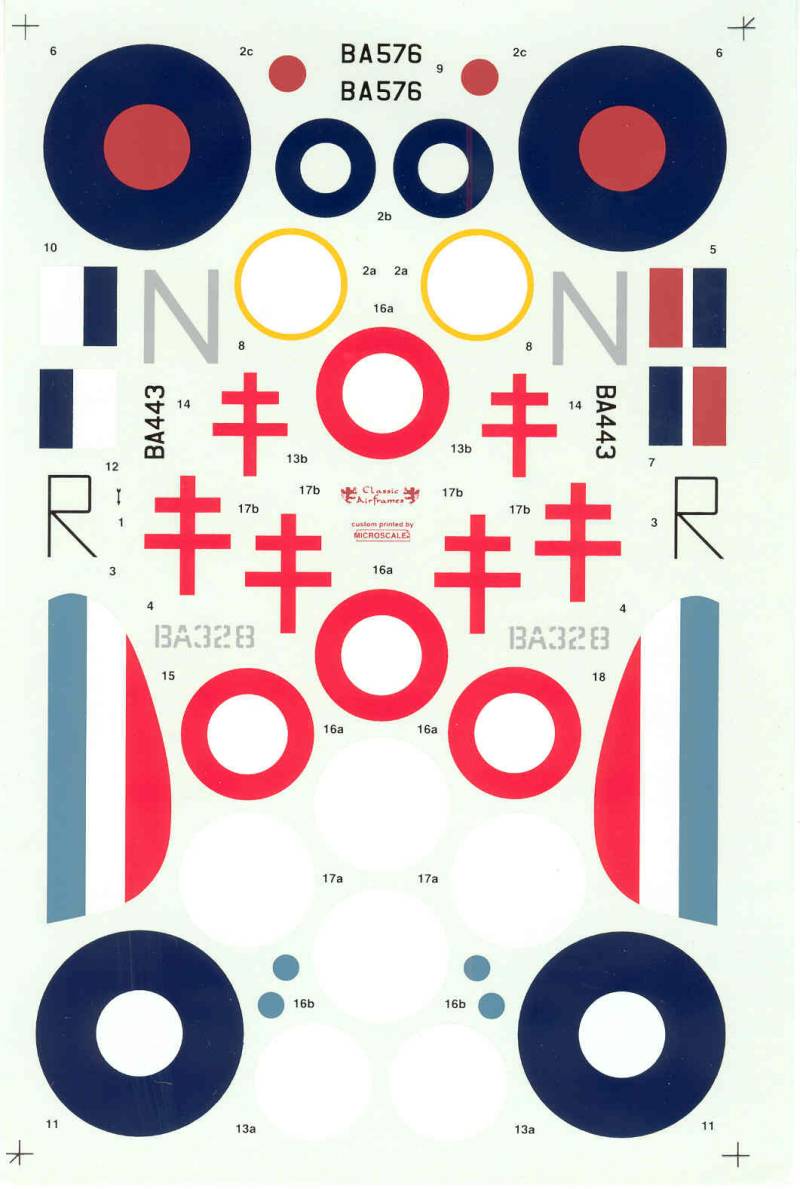
The instructions are standard CA fair, two pages folded in half creating 8 pages. The first page containing history and specifications, the second page with an icon guide, paints required and a parts map, and the balance of the pages devoted to assembly steps. A second page about 8 1/2" x 11" and printed on glossy paper on one side has the painting and marking information.
After Market Goodies
None that I am aware of
Conclusions
This appears to be a nice kit with lots of included extra detail and is not really in need of any after market parts. It should be no more difficult than other kits from Classic Airframes which means that one must take care to properly clean and test fit parts before assembly, pretty much the drill for limited run kits and should present no major problems for those who have built several of this type of kit in the past. I do think the author of the review in the link below over exaggerated the problems he had, perhaps he had not built that many limited run kits before. I can guarantee you there are limited run kits that make this kit look like something from Tamiya.
Links to kit build or reviews
Build / reviews can be found here.
References
Bristol Blenheim in Action by Ron MacKay
Famous Bombers of the Second World War by William Green